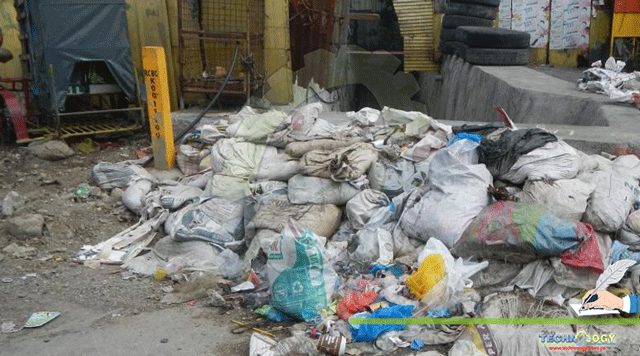In this modern time, it cannot be doubted that material and waste recycling is one of the bedrock of sustainable development and clean energy.

In this modern time, it cannot be doubted that material and waste recycling is one of the bedrock of sustainable development and clean energy.
Its benefit to development can never be over-emphasized. Many scholars have different inputs on what waste energy recycling is about. Waste recycling is the reconstruction or reformation of waste materials to become useful to society.
As written by the United States Environmental protection agency, energy recovery from waste is the conversion of non-recyclable waste materials into usable heat, electricity, or fuel through a variety of processes, including combustion, gasification, pyrolization, anaerobic digestion and, landfill gas recovery.
Recycling can be grouped into three major types; primary, secondary, and tertiary. Primary recycling, otherwise called closed-loop, is the process of transforming a material into its same kind. A typical example of this is the transformation of a trash soda can into a new soda can. No chemical process is involved in this set of recycling.
On the other hand, in secondary recycling, recycled materials are used to make new products made of the same material. For example, cycling tires can be used to make other products made of rubber. Moreover, tertiary recycling is the breaking down of products with the help of chemicals which leads to the production of different sets of products like recycling of waste into electrical energy, fuels and so on.
What Type of Plastics Can Be Recycled?
According to S.L Recycling, below plastics can still be recycled:
- Polyethylene Terephthalate (PET) – water bottles and plastic
- High-Density Polyethylene (HDPE) – milk cartons and shampoo
- Polypropylene (PP) – margarine tubs and ready-meal
- Polyvinyl Chloride (PVC) – piping
- Low-Density Ethylene (LDPE) – food bags
- Polystyrene (PS) – plastic cutlery
Why Waste Recycling?
As prior-mentioned, the need for recycling cannot be over-emphasized. The below points captured why waste energy recycling is vital.
Electricity:
Electrical energy can be generated through recycling cling of garbage materials. Through gasification, any materials containing carbon such as coal can be synthesized or burned to produce electricity or vehicle fuel. The decomposition of garbage which is a waste material gives off methane gas, which is the constituent of natural gas. The methane gas of the decomposed garbage is collected through a pipeline channelled at the landfill, which is used in power plants to make electricity.
According to R.P Deshpande, more than 900 thermal waste-to-energy (WTE) plants operate around the globe. These plants treat an estimated 200 million tons of Municipal Solid Waste (MSW) with an estimated output of 130 terawatt-hours (TWh) of electricity.

Source: R.P Deshpande 2015: Electricity from garbage
Clean energy
Renewable energy, otherwise called clean energy, are those sources of energy that do not pollute the environment when used. Waste recycling is a good source of clean energy. The Air and land pollution caused by garbage that affects the environment can be ameliorated through recycling into energy.
Biomass energy, which is the degradation or fermentation of organic material, is a clean source of energy in Brazil. Almost a million people in Brazil work in the production of biomass, which represents 27% of the country’s energy generation.
Agriculture
Waste materials serve as manure for crops on the farm. Waste from food is treated, conditioned, and transformed into fertilizer for agricultural purposes. According to Isaac et al. recycling of agricultural solid wastes leads to a reduction of greenhouse gas emissions, and it can be used as fossil fuel which contributes significantly to the development of new green markets, creation of jobs, production of bio-energy, and bio-conversion of agricultural solid wastes to animal feed.
Reduction of Waste
The reduction of environmental pollution caused by waste materials is made possible through recycling. Since time immemorial, waste products have been a tremendous problem to the environment. Most waste from cities is huge to the extent that not all can be land-filled. As such, some have been disposed of in water bodies which go on to affect aquatic life. As captured in Green Journal (2017), 50 million and 1.8 billion of wastes are produced yearly in Australia and
Europe respectively. However, these tones of waste can be converted into energy which will, in turn, become useful to society.
Reduction of Greenhouse gas emissions
Energy generated from waste reduces greenhouse gas emissions. Michael (2019) has it that any greenhouse gas has the property of absorbing infrared radiation emitted from Earth’s surface and reradiating it back to Earth’s surface, which causes a greenhouse effect.
Greenhouse gas emission results in climate change, and it can cause respiratory diseases, desertification of fertile lands, and an increase in wildfires. However, according to Matt Kasper (2013), every ton of garbage processed at an energy for waste facility prevents a ton of carbon dioxide.
Garbage burned for energy for waste facilities does not generate methane, as in the case of landfills. This is because the waste that could have been thrown into landfills is recycled as such it offsets greenhouse gases that would have been generated from natural gas plants (Math Kasper, 2013).
In all these aforementioned points, we have seen that waste recycling is very essential and beneficial to our ecosystem. As such, there is a need to adopt waste recycling instead of landfills.